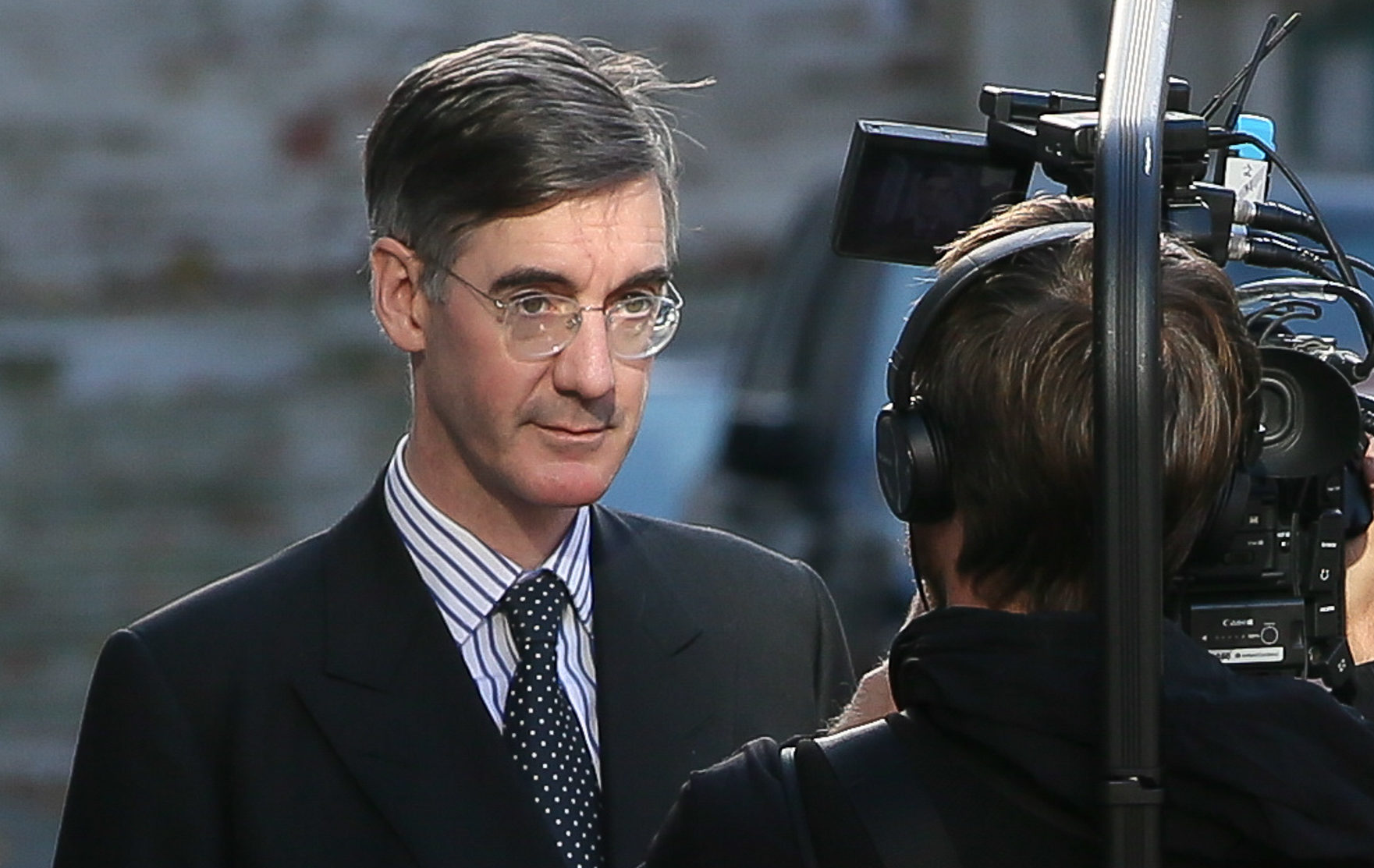
BREXITEER Tory Jacob Rees-Mogg has submitted a letter of no confidence in Prime Minister Theresa May.
The North East Somerset MP met with fellow eurosceptics in the European Research Group (ERG), which he heads, following Mrs May’s statement on the Brexit deal in the Commons.
As a result, he has handed in his letter of no-confidence to Sir Graham Brady, chairman of the 1922 Committee, saying the deal “has turned out to be worse than anticipated and fails to meet the promises given to the nation by the Prime Minister”.
NEW The Rees Mogg letter is in. pic.twitter.com/y8aa7SlMwC
— Carl Dinnen (@carldinnen) November 15, 2018
Speaking outside Parliament, Jacob Rees-Mogg denied he was attempting a “coup” against Mrs May.
He said a coup involved using “illegitimate procedures” to remove someone from office, while he was making use of Conservative Party rules in an “entirely constitutional” way.
Mr Rees-Mogg said he was not putting himself forward as an alternative leader of the Tories.
“I am not offering my name as leader,” he said.
And he added: “This is nothing to do with the ambition of Brexiteers. It is everything to do with the ambition of Brexit for this country.”
Discussing Mrs May’s plan, he said: “This is not Brexit. It is a failure of Government policy. It needs to be rejected.”
Mr Rees-Mogg declined to name his preferred candidate for leader.
But he listed Boris Johnson, David Davis, Dominic Raab, Esther McVey and Penny Mordaunt as potential candidates to succeed Mrs May.
Mr Rees-Mogg said that he believed the necessary 48 letters to trigger a vote of no confidence in the Prime Minister would be submitted, but declined to put a timeframe on the process.
If Mrs May was rejected by MPs, a vote to choose her successor could be conducted in “not months but weeks”, he said.
Asked why he was defying calls for party unity, he said: “People always call for unity when the policy they are following is wrong. It is a standard pattern of Conservatives when they note that failure is in the air.”
He said that Dominic Raab should not be blamed for the deal negotiated with Brussels, as it was clear that the process was driven by Downing Street. There was no point appointing a new Brexit Secretary, he said.
Mr Rees-Mogg had earlier challenged the PM in parliament over what he saw as a series of claims she’d made about Brexit that did not tally with what was included in the draft deal.
He then asked Mrs May if he should write a letter of no confidence as a result.
How a letter of no confidence works
For a vote to be called, 15% of Conservative MPs must submit letters to the chairman of the party’s backbench 1922 Committee, Graham Brady.
This works out at 48 letters, after which the committee is then required to consider and hold a vote.
In a no confidence vote, Theresa May would have to win the backing of half of her MPs (159) to remain in power. If she does this, she cannot be challenged for another year.
If she doesn’t achieve this, a leadership contest would be called.

Enjoy the convenience of having The Sunday Post delivered as a digital ePaper straight to your smartphone, tablet or computer.
Subscribe for only £5.49 a month and enjoy all the benefits of the printed paper as a digital replica.
Subscribe